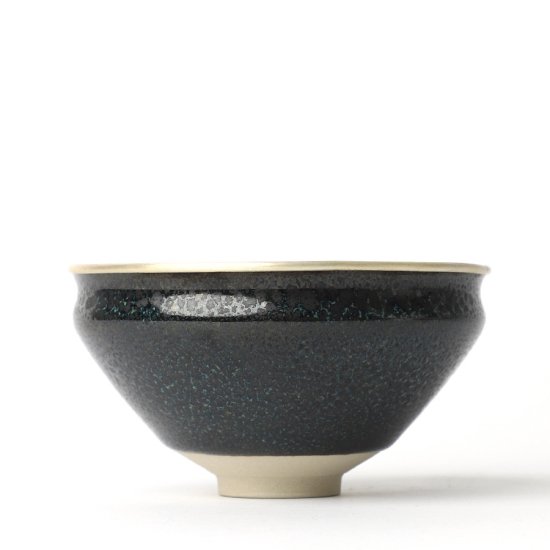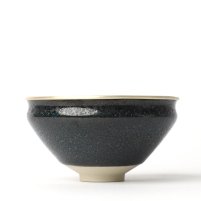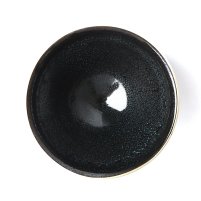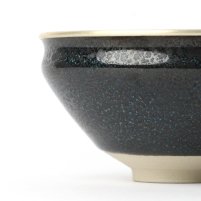Tenmoku 天目
A type of Japanese pottery and porcelain that imitates Jian stoneware from China, Tenmoku takes its name from the Tianmu Mountain temple in China where iron-glazed bowls were used for tea, a style that became popular during the Song dynasty (960-1279). These bowls are said to have been introduced to Japan during the Kamakura period (1185-1333) where they were to become highly prized in the tea ceremony. Eventually the style was also produced in Japan, notably in Seto: one of Japan’s legendary Six Ancient Kilns or Rokkoyou. Made of feldspar, limestone and iron oxide, tenmoku glazes can range in colour from black to brown, yellow and plum; the quicker a piece is cooled, the darker the resulting glaze.
Yūteki Tenmoku 油滴天目
One of the most admired Tenmoku styles, yūteki literally means “oil spot”. Looking into a Yūteki Tenmoku tea bowl is like gazing at a starry night sky: with sparkling crystal spots scattered across an ultra glossy jet-black glaze. A notoriously challenging technique to master, the floating oil-like spots are achieved through overloading the glaze with iron, which forms little glass droplets during phase separation that burst when they come up to the surface.









